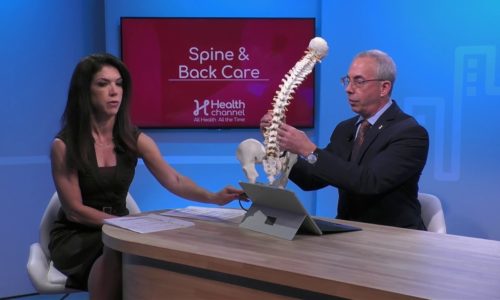How are growth plate injuries treated? |

Growth plates are narrow sections at either end of children’s long bones where growth in length occurs. Examples of bones in the developing skeleton with growth plates include the femur (thigh bone), the humerus (upper arm bone), the ulna and radius of the forearm, and the tibia and fibula in the lower leg. The growth plate (also known as the physis) is made of cartilage which is weaker than actual bone. This makes them particularly susceptible to injury or fracture. With closure of growth plate at skeletal maturity, the bone is no longer capable of further lengthening.
How does a growth plate injury occur? Up to one-third of all fractures in children and adolescents involve a growth plate. Being the weakest link in the bone-joint-bone chain, an injury that would break a bone or sprain a ligament in an adult would more likely result in a growth plate fracture in a child. Most growth plate injuries are caused by a blow or twist of a limb. Accidents during recreational activities such as biking, sledding, skiing, or skateboarding are responsible for a large percentage of growth plate fractures. They can also occur from repetitive stress or overuse. For example, a young baseball pitcher with poor throwing mechanics risks the development of a growth plate injury to the shoulder or elbow.
How Are Growth Plate Fractures Diagnosed? Fractures involving bones typically show up well on x-rays. Cartilage, however, lacks the calcium content of bones and does not show up on x-ray. Since growth plates are made of cartilage, the diagnosis of growth plate fractures with standard x-ray can be challenging. Signs or symptoms that would suggest the presence of a growth plate injury include:
- Persistent pain near the end of a long bone (in the area of the growth plate)
- A visible deformity, such as angulation or bend in the limb
- Swelling, warmth and/or tenderness near a joint
If a growth plate fracture is suspected but the initial x-rays appear normal, several measures can be taken to further investigate the injury. Taking a “comparison view” of the uninvolved limb may demonstrate a difference in the injured vs. uninjured limb. For example a widened growth plate on the injured side suggests that there is a fracture through the growth plate. If the initial x-rays are negative, doctors may also choose to splint or protect the injured limb and repeat the x-rays in a few weeks. Since the body’s response to a growth plate fracture is to deposit calcium at the site of the injury, this may be seen on follow-up x-rays. When an immediate diagnosis is required, special imaging, such as CT scanning or MRI scanning may reveal the presence of a growth plate injury not seen on x-ray.
Are all growth plate injuries the same? The Salter-Harris classification system defines five basic types of growth plate fractures. These range from the least severe (Type 1) that affects only the growth plate itself to the more severe types (Types 2 through 4) that involve both the growth plate and a segment of adjacent bone. The most severe (and least common) growth plate injury is the Type 5 fracture that occurs when the growth plate is compressed or crushed. While the prognosis for eventual normal bone development is good in the less severe growth plate fractures, stunting of eventual bone length is more likely with the more severe types.
How Are Growth Plate Injuries Treated? Treatment of growth plate injures depends on several factors such as the Salter-Harris fracture type, the specific bone that was injured, and the age of the individual that was injured. With less severe injuries that are not out of place (non-displaced), immobilization with a cast or splint may be adequate. If the bone fragments are out of place, surgery to restore the alignment (reduction) and to maintain that position with the use of screws or plates is often required. Healing can take anywhere from a few weeks to several months, depending on the severity of the injury and whether surgery was necessary.
What is the long term outlook for a growth plate injury? With prompt identification of the injury and appropriate treatment, most growth plate fractures heal without any lasting effects. The most frequent complication of a growth plate fracture is premature arrest of bone growth. If the growth plate fracture involves an arm or leg, this could result in a significant shortening of the extremity. With any growth plate injury, follow-up care is important to make sure bones are healing and continuing to grow normally.
If you have any more questions just Ask Hanna, our health advisors are here to help.
Image: ©Shutterstock / Xray Computer








